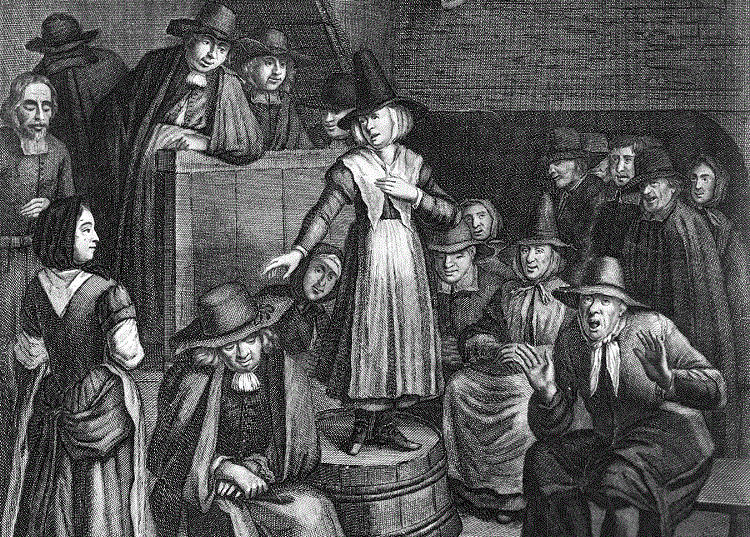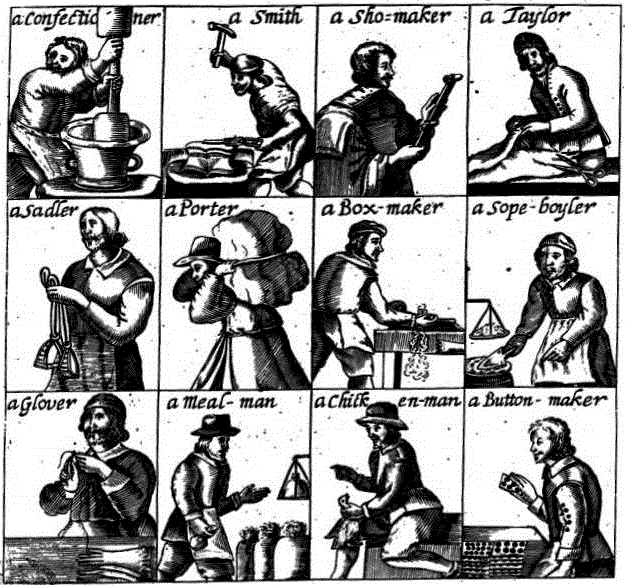
The World Turned Upside Down

Introduction
The Civil War and the execution of the king broke down the normal controls in society. People felt free to think and speak as they liked. If Parliament could overthrow the king and the bishops, why should they obey the lord of the manor and the vicar?
Many different 'sects' and radical political groups grew up with all sorts of ideas.
They were brutally persecuted and suppressed, their leaders executed and imprisoned; only the Quakers survived.
After you have studied this webpage, answer the question sheet by clicking on the 'Time to Work' icon at the top of the page.
Links:
The following websites will help you research further:
Radical groups:
•
Radical religion in the Civil War
• Detailed
account of the Diggers and Levellers
• History Learning Site on the Levellers
• Detailed
account of the Quakers
1 Radical Groups of the Civil War period
Here are just six of the 'sects' of the time:
|
QUAKERS refused to have ministers. At their church meetings, anybody could speak. Sometimes they became so filled with the Holy Spirit that they shook all over.
Quakers never took their hats off to their 'betters'. There were about thirty-five thousand Quakers by 1660. Their founder was George Fox, but many of their leaders were women. |
FAMILISTS belonged to a sect called the Family of Love. They did not believe in heaven or hell. They said that Christ was just a good man who set an example for people to follow.
Familists claimed that they did not have to obey the laws of the country, and said that one day they would conquer the world. Many of their leaders were women. |
| The
DIGGERS were the first
communists. Their leader was Gerrard Winstanley. They believed that all men and women were equal, and had an equal right to the land. They did not allow any private property or possessions. They moved onto the Common at Walton-on-Thames, in Surrey, and farmed it together. |
The
RANTERS
believed that, as Christ had died for their sins, Christians could
behave as they wanted. Drunkenness, adultery, theft and murder were
not sinful. In fact, it was good to sin. One of the Ranters' leaders, John Robson, claimed he could raise the dead. His followers said that he was God, his wife was the Virgin Mary, and his son was Jesus Christ. |
| The
LEVELLERS wanted a new, fairer society – even for ordinary people such as chicken-men and button-makers.
They wanted elections every year, at which all men over 21 would vote. They wanted freedom of speech, freedom of worship and better education for everyone. They believed that men and women were equal. The Levellers' leader was John Lilburne. They were a national organisation, with officers in London and published a newspaper, The Moderate. Their emblem was a sprig of rosemary. |
The
FIFTH
MONARCHISTS
believed that the death of Charles I had opened the way for a new
government: the 'fifth monarchy' (the reign of Christ on earth).
The Fifth Monarchists were mostly soldiers and poor townspeople. They believed that Christ was going to return and set up a perfect world in which poor people would make the laws. There would be no more disease or pain. T hey also believed that this new kingdom would be brought in by violence, and they rebelled in 1657 and 1661. Their leader was Thomas Venner. Many of their prophets were women. |
2 Quaker preacher
This contemporary print includes the verse:
Flusht with Conceit (which she ye Spirit calls) - Upon a Tub see how Dame Silence bawls
Whilst Dunghill Cocks in a most pious strain - Listen to the Cackling of the hen
In publick who can beare a Females tattle - Let me in Bed heare my kind Mistress prattle.

3 Preachers in the city of London
This contemporary print is from a broadside of 1647, with the title: 'These tradesmen are preachers in the city of London'.
 .
.
4 The Ranters
A broadside of 1650 by 'R.L.'.
